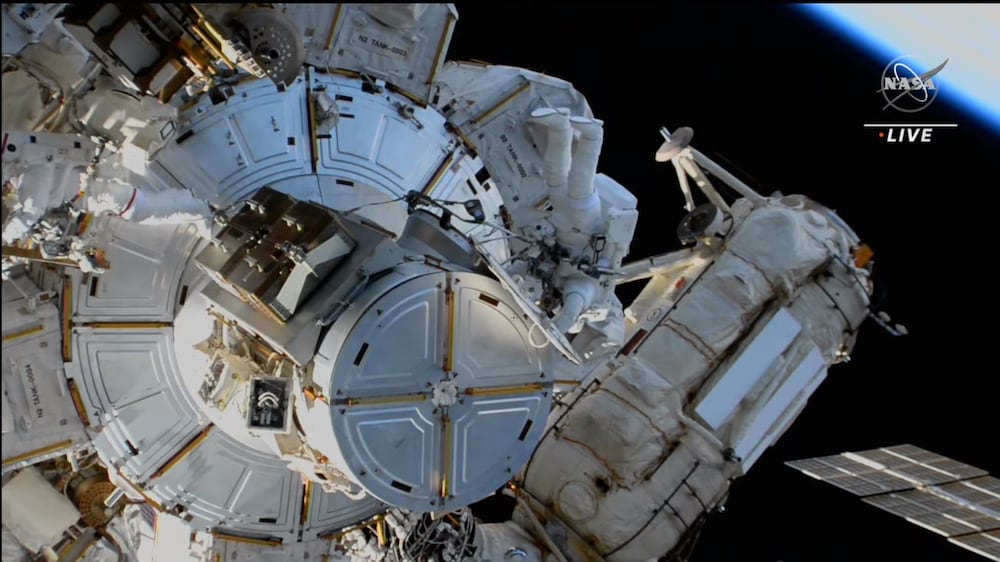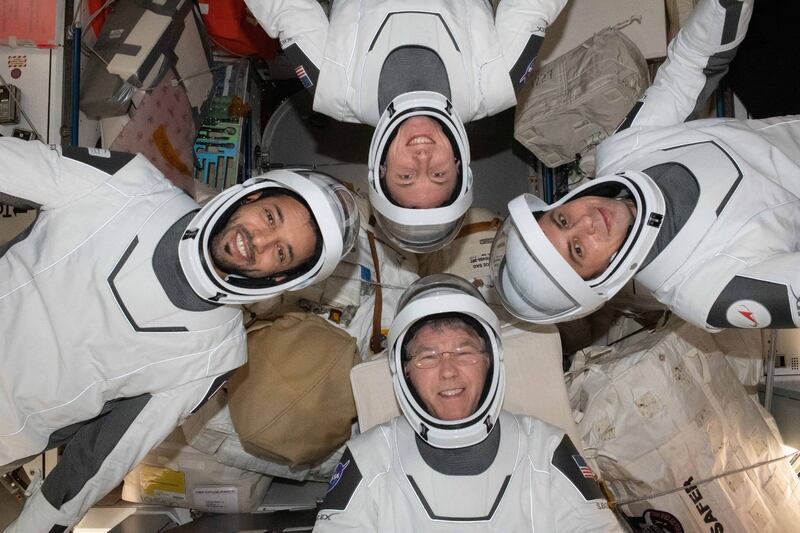UAE astronaut Sultan Al Neyadi will assist two of his American colleagues going on a spacewalk outside the International Space Station on Friday.
Stephen Bowen and Woody Hoburg will install new solar arrays on the exterior of the ISS.
Dr Al Neyadi had helped to prep the area for the installation on April 28, when he ventured outside the station with Mr Bowen for a seven-hour maintenance assignment.
During the task he became the first Arab astronaut to perform a spacewalk.
Now, he will be helping his spacewalking colleagues from inside the station.
Sultan Al Neyadi becomes first Arab to walk in space

"Nasa flight engineers Stephen Bowen and Woody Hoburg are scheduled to set their extravehicular mobility units, or spacesuits, to battery power at 9:15am EDT (5.15pm GST) on Friday, officially beginning a spacewalk to install a roll-out solar array on the station’s starboard truss structure," Nasa said on Thursday.
"The two astronauts were also joined by flight engineers Frank Rubio of Nasa and Sultan Al Neyadi of the UAE for a final review of their spacewalking tasks and robotic support procedures.
"Rubio and Al Neyadi will assist Bowen and Hoburg from inside the station on Friday."
More power on the space station
A SpaceX Dragon resupply spacecraft delivered the new solar arrays to the ISS on Tuesday, as well as other hardware, experiments and food items for the astronauts.
This is the last set of roll-out arrays that are being installed, and are meant to significantly increase the station's power-generation capability.
In the previous spacewalk, Dr Al Neyadi helped to install multi-layer insulation that helped prepare that part of the ISS for the upcoming installation.

"Each new Irosa [roll-out solar arrays] will produce more than 20 kilowatts of electricity, and once all are installed, will enable a 30 per cent increase in power production over the station’s current arrays," Nasa said.
The old solar arrays are operational, but have begun to show signs of degradation because they have operated beyond their designed 15-year service life, according to Nasa.
They were installed in 2000 and have been powering the station for more than 20 years.
This is Dr Al Neyadi's first space mission, but he is now an experienced astronaut playing a crucial role in helping Nasa maintain the ISS.
Future of the space station
Nasa and other country partners of the ISS – Russia, Japan, the European Space Agency and Canada – have plans to keep the station operational at least until the end of this decade.
But global space ambitions have now shifted to achieving crewed missions to the Moon and Mars.
Companies are also considering how to commercialise low-Earth orbit with private space stations.
Space infrastructure company Axiom Space is planning to launch a commercial module to the ISS that would become its own independent station once the station retires.
The station will offer access to researchers, astronauts and tourists.
Jeff Bezos’s Blue Origin announced plans to build a private space station in Earth orbit, called Orbital Reef.
The space tourism company hopes to build a “mixed-use business park” and is promising access to media, tourists, astronauts and researchers.
Non-ISS partners, including Arab countries such as Saudi Arabia and the UAE, would benefit from private space stations, because it would allow them to buy more missions to space.







